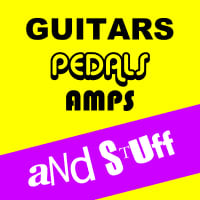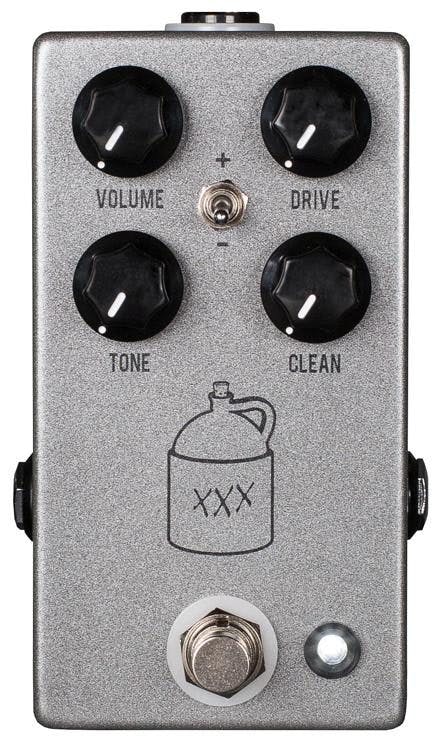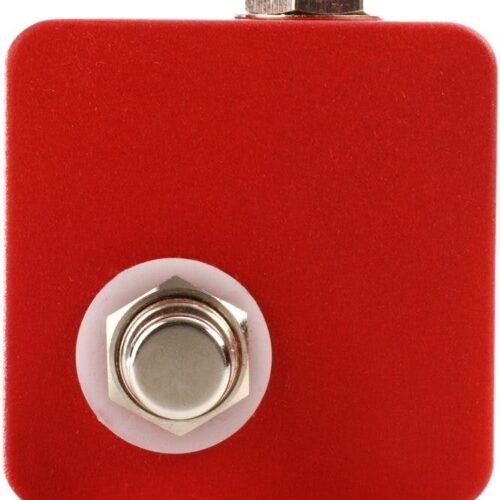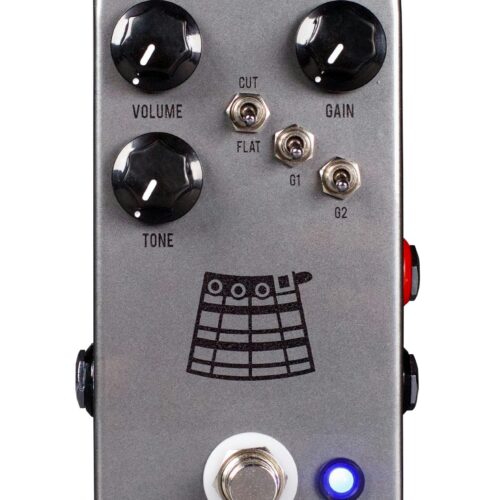Distortion is a guitar effect that alters the signal’s waveform, creating a gritty, aggressive sound characterized by a high level of harmonic content and sustain. It’s achieved by amplifying the input signal to the point where the amplifier or pedal’s circuitry begins to clip, causing the waveform to become squared off and jagged. This clipping produces harmonics that weren’t present in the original signal, resulting in the characteristic “gritty” or “dirty” tone associated with distortion. Distortion pedals typically feature controls for adjusting the amount of gain or distortion applied, as well as tone-shaping knobs to tailor the sound’s frequency response. Distortion is widely used in rock, metal, and punk music to add power, aggression, and sustain to guitar solos, riffs, and rhythm parts, creating a bold and intense sonic impact in the mix. Popular distortion pedals include the Boss DS-1, Pro Co Rat, and Electro-Harmonix Big Muff Pi.
Guitar FX (effects) refer to the wide range of pedals and processors that shape and manipulate a guitar’s signal to create different sounds. From classic distortion and overdrive to reverb, delay, modulation, and pitch-shifting, effects are at the heart of a guitarist’s creative toolkit. Whether analogue or digital, stompbox or multi-effects unit, Guitar FX allow players to express mood, texture, and dynamics in unique ways. Used thoughtfully, they can transform a simple riff into something atmospheric, aggressive, or entirely otherworldly.
A pedal is a compact device that guitarists use to alter their instrument’s sound by shaping effects such as distortion, delay, reverb, and modulation. Typically housed in a rugged enclosure and controlled by footswitches, pedals are designed to be placed on the floor for hands-free operation during playing. They can be analogue or digital, true bypass or buffered, and come in countless varieties to suit different styles and preferences. Pedals are essential tools for creating signature tones and adding colour and texture to a guitarist’s sound.
We have new and used JHS musical equipment available on our website for fast direct delivery from sellers across the UK & Europe.
JHS Pedals was founded by Joshua Heath Scott in Jackson, Mississippi. He began by repairing and modifying his pedals and then sold modified pedals at the local guitar shop before designing his own. Among his early models were the Morning Glory overdrive and the Pulp ‘N’ Peel compressor. In 2009 Scott moved the company to Kansas City, Missouri, eventually expanding to 10 employees.JHS released the Panther analogue delay in 2011 and the SuperBolt overdrive and Prestige booster/buffer/enhancer in 2012.
JHS manufactures and sells pedals with a variety of effects, including the Morning Glory V4, the Muffuletta, the 3 Series, the Pulp’N’Peel V4, the Andy Timmons AT+, the Paul Gilbert PG-14, the Legends of Fuzz series, the Unicorn Univibe, the Lucky Cat, the Double Barrel V4, the 1966 Series and the Colour Box preamp.
£196.62
Convincingly and accurately breathes JCM800-like tones into any rig Sports a 3-band tone stack to help nail warm yet searing tones and boundless sustain Go from bluesy Hendrix-like breakup to high-gain Brit tones with a twist of the Drive knob Drive and Volume control interact the same as a master volume amp head International products have separat…
read more £92.63
Made in Kansas City USA Allows you to utilize Leo Fender’s revolutionary effect in a package much easier to tote than a vintage amplifier Toggle up is a great sounding amp trem, while toggle down is our take on harmonic trem effect Runs on 9V DC Negative Center power and consumes 65 mA
£99.00
Made in Kansas City USA This pedal represents years of Josh playing around with the legendary Tube Screamer circuit and wanting to offer those changes in an affordable package You will find more clean headroom, better usability as a boost, more versatile drive and tone controls as well as a more pleasing frequency response This may be the most well…
read more £195.97 £194.61
Compact and versatile tone-machine When both toggles are down, you are in the lightest gain setting, amp-like chimney breakup G1 flipped up adds a touch of drive for more riffy grit G2 flipped up puts you almost into distortion land, with more saturation and sustain for lead tones Both toggles flipped up sends the Kilt V2 into almost uncontrollable…
read more









